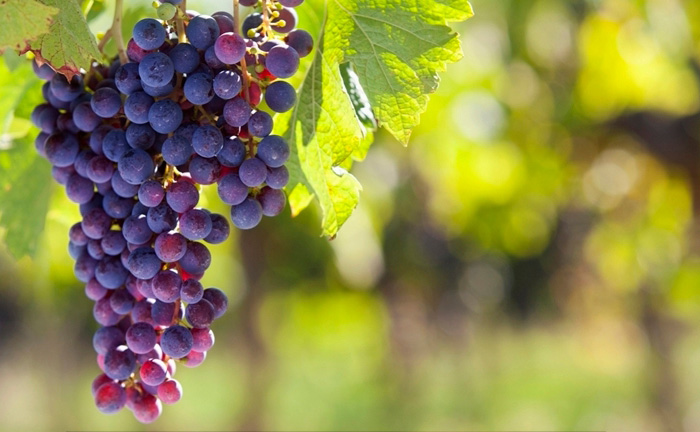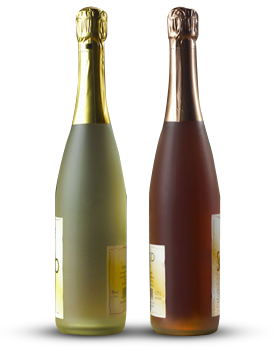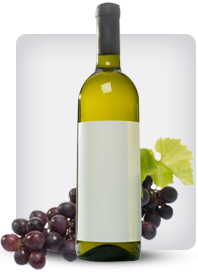

Category: Zinfandel Wine
South African Wine
Posted on
Since the 1990s the production and popularity of South African Wine started to grown, this is due mainly to the end of the apartheid. From this many winemakers begin to indulge into their wine making exploring new ideas and technologies that they had never tried before, to rapidly speed up their developments of wine production. They also began to exchange ideas with other wine makers from around the world as before this time they had only exchanged through post, and now other winemakers from around the world where being flown into South Africa to share their knowledge on viticulture and winemaking. All these factors have helped the South African Wine industry bloom in the last 20 years.
The South African wine regions are mainly situated around the coast exposed to the Atlantic and Indian Ocean at the South tip of Africa. Because of this exposure to the sea the major wine regions have a Mediterranean climate, which mean that the vineyards are exposed to hot sunlight during the day, with a cooler temperature in the evening created by the cool sea breezes. Also the main ocean current brings cool breezes from the Antarctica, to help cool South Africa’s hot days.
South Africa’s most popular red wines are Cabernet Sauvignon, Merlot and Pinotage, and South Africa’s most popular whites are Riesling, Sauvignon Blanc, and Chardonnay.
South African Wine has many wine growing regions, some of the most popular are
Constantia was the first place where vineyards in South Africa where planted. Because of this regions shape it is exposed to the sea on both sides, experiencing cool breezes, which cool down its days and nights, to create a slow and ripening period for the vineyards. Sauvignon Blanc is famous here.
Stellenbosch is a popular tourist destination for wine lovers, with many wine trails and vineyards with included accommodation for a tourist to visit. Here the second vineyards were planted in South Africa. This area is exposed to the nearby coast which brings in a cool sea breeze, keeping the summer temperature steady. Here African red wines are grown in the east and white wines in the west, where they are nearer to the cool breeze from the coast.
Paarl can be hot, meaning that the best vineyards are grown on the higher altitudes. Two popular areas here are The Franschhoek Valley and Wellington. Paarl is mainly linked to white wine, but with the hot summers and steep slopes, red wines popularity is rising.
Robertson is known for its Chardonnay and Shiraz, along with other South African Whites. Robertson is a hot region located in the Valley, where the river gives life to the area.
Walker Bay is known for its cool climate as it is close to the coast and constantly exposed to the ocean breeze. Chardonnay and Pinot Noire are famous here.
Elgin is up and coming in wine production. It’s a great fruit growing place, and its climate is ideal for cool climate growing wines.
Find More Zinfandel Wine Articles
Spanish Wines (Rioja Wines)
Posted onSpain stands out as the third largest producer of wine after France and Italy. The Northeastern part of Spain that is the Rioja Region produces one of the best Spanish wines. This is divided into three geographical zones that happen to be Rioja Alta, Rioja Baja, and Rioja Alavesa. Each zone has its own unique flavor of grapes. The climate and quality in the soil in each of these three subzones influences the category and also the character of its grapes. Rioja wine is made with a blend of grapes from different subzones. Tempranillo grapes are the commonest form of grapes which are made with Rioja wines.
This is what gives its distinguishable flavor. Tempranillo grapes are combined with Grenache grapes or Mazeulo grapes. Grenache doesn’t have that fruity taste and its alcohol content is higher. Rioja Wines are available in three classifications and they are the Crianza, Reserva and the Gran Reserva. Crianza is probably the most affordable one and is viewed as table wine. What they typically do is age this for only a year inside the oak barrel and another year in the bottle. You could get this for five or ten US dollars. Now, let us talk about Reserva. This is aged at least one year inside the barrel and two years inside the bottle. This will amount to around eleven to fifteen US dollars. Aging for the Gran Reserva is completed with all the wine staying in the barrel for two years then in the bottle for 3 years.
This generally is a bit pricey. Unfortunately the Gran Reserva is not offered every year. It is much better that you retain several bottles for special occasions. Rioja wine is often the Spanish version of the Italian Chianti. This sort of wine is best-known for its unique flavor. Now, the Rioja wine is considered one of the most well-liked wines in the world.
Stainless Wine Refrigerator
Posted onMany people make the mistake of thinking that by just keeping their wine in a normal kitchen refrigerator they will conserve quality and they wonder why other people rave on about having a wine refrigerator. As far as wine drinkers are concerned, though, red wine at normal kitchen refrigerator temperature becomes far too cold for drinking. So too with white wine; there’s a limit to how much this should be chilled also.
To get the very best out of your wine collection, always store the wine at the correct temperature. Letting the wine get too warm will affect the taste and overall quality. This is where the importance of choosing a wine bottle refrigerator comes into consideration and you think: How big a unit do I want? How many bottles will I be storing? How will it look on display? Do I want a wooden or a stainless wine refrigerator? How much will it cost?
Like most household appliances there are many different brands to choose from. People are aware of the leading manufacturers in the household goods category: LG, Westinghouse, Avanti, Whirlpool, Viking, Electrolux, etc. The brand name is not the main thing, though, as price will probably be a more determining factor when choosing a unit.
If you are considering a stainless wine refrigerator, you will most likely give a lot of consideration to a unit with dual zone temperature control. This set-up will allow you to store your prized bottles of red as well as your whites.
As a keen wine collector, I have never regretted purchasing a wine bottle refrigerator to keep my wine collection in pristine condition. I opted for a stainless wine refrigerator to blend in with my apartment surroundings.
Shop around before purchasing a wine refrigerator. Good discount prices are available if you are prepared to do diligent research. I purchased my unit online and have yet to find a better deal elsewhere.
The Vinotemp Wine Refrigerator that I purchased, for example, is one of the best brands on the market. It allows wine collectors to store their wines without having to resort to underground cellars. The unit has a well-lit interior, security lock, traditional thermoelectric cooling, and exterior LED display.
If you are wine collector, you want to be able to pull out a bottle of wine and have a good idea before having it with your meal that it will taste just right. If you are having friends over to your house to sample one of your favorite wines, you want an assurance of quality before opening a bottle. Only through storing your wines in a wine bottle refrigerator can you have such assurance.
Grape Wines
Posted onDiverse Drinks: Red vs. White Grape Wines
Grapes wines are known for their long record with human kind. From the ancient Greeks who wrote great epics centered about wine, to the wine-loving French that mysteriously never gain pounds even when their diet is full of saturated fat. And the list of the varieties of such wines is about as long as their history; with each kind of wine being in a class of its own.
But if you must simply divide the wine according to its purpose and taste, a choice between white wine and red wine would be the most appropriate difference between them.
While it may be an oversimplification to group all the grapes wines in the world into twocategories, most wines that come from grapes can be prepared in two ways: fermenting them with the skins, or without the skins. The former produces red wine, and the latter produces white wine.
Here is a quick breakdown of the two main differences between red wines and white wines.
Red wines are called red wines not because they are blue or black or orange or pink: it is because they are red. From deep hues of red to lighter color tone of red, all grapes wines that are dark and opaque are called red wines. This is because of the tannins in the grape skins that dyes the wine red, and gives red wine its unique color. Now take note that a few red wines may appear bluish or even blackish, but shine a light through them and you will see a shade of red there somewhere.
While red wine is called red, white wine is called white not because of its color, but its lack thereof. White grapes wines are fermented without the skin; only the pulp of the grapes is left to ferment in the vats. This causes the solution to be clear, as most grape pulp is clear and transparent. Without any skin to provide the tannins, the white wine then does not gain color: making it clear by nature.
Because of the presence of a high amount of tannins in the solution, red wines have a distinctly stronger and more complex taste; often to the disliking of newcomers to the wine scene. This heavy, strong taste makes red wine go well with foods that are equally strong and complex in nature. Beef, lamb, duck, sausages, and other meats are prime matches for red wines.
Conversely, the lack of tannins in white wines gives them a tangy, almost fruity flavor. This makes them easier to the palette, and goes well with foods that are light in flavor too. It helps you savor the taste without overpowering the taste buds, like what red wines tend to do. This makes white wines ideal for meals with chicken, seafood, turkey and other light foods.
Remember, there are many other types of grapes wines out there, and it would not do them justice to simply be grouped into these two very broad categories of red and white wine. Just learn to appreciate the flavor and texture of each wine, whether dark or transparvarietiesent, and you will eventually understand why this broad categorization simply will not be able to encompass all the wines out there in the world.
White Wine Making
Posted onWhite Wines vs. Red Wines: Do you know All the Differences?
You don’t need me to tell you that the difference between red wines and white wines is the color. But I’m sure that I can mention a few facts about wines that you didn’t know. For example, did you know that many white wines are produced with red grapes?
The Tannic Element
White wines are characterized for having low levels of tannin, while red wines contain it in high quantities. I know what you’re thinking…It is safe to deduct, then, that this tannic element is entirely responsible for a wine’s color, correct? Correct! Tannins place a significant role in wine color, since they carry the pigments that give it a dark, reddish hue. They are extracted from grape stems, seeds and skins where they are found in high concentrations.
Color Hues
When white wines are made, these skins, stems and seeds (lees) are isolated from the must, or pressed grapes. Winemakers do this to prevent the reddish color and qualities that tannins impart in the wine, thus obtaining an amber-colored drink, instead of a ruby-colored one. Tannin concentrations depend not only on how much of the lees are left in the fermentation vessel, but also for how long they remain in contact with the must. Because of this, you will find many different red wines with different hues of red. The darker the red is, the longer it has been in contact with the grape juice and must.
Wine Qualities According to Color
Aside from color, tannins give wines a heavy, round, complex quality. This makes red wines warmer and spicier in nature, full-bodied and with a prevalent sedimentation. On the other hand, white wines tend to be crisp and light, and generally they summon wine enthusiasts that are looking for a fruity, refreshing drink.
Fermentation Practices: Whites vs. Reds
Red wines also differ from whites in terms of their fermentation and ageing. White wines, for one, are generally fermented at cool temperatures and for a long time. Red wines, on the other hand, require warmer temperatures, and a speedier fermentation process. Winemakers use this temperature variation in white wine making in order to stall fermentation – which aids in the development of tannins. To compensate for the slow fermentation progress, vintners extend the process to achieve a ‘tannic complexity, but without high tannin contents.
The Effect of Oak in White Wine Ageing
In addition to fermentation, the use of oak enhances tannin extraction into the wine. With this in mind, you’ll find that darker red wines are most frequently aged in oak – and that white wines are rarely exposed to this wood. One example of a white wine that is aged in oak is the Chardonnay. Proof of higher tannin content, Chardonnays are generally drier, slightly round-bodied and darker than other white wines. In replacement to oak barrel ageing, white wines are most commonly treated in stainless steel vats. The use of metal not only prevents tannin extraction, but it aids in temperature control and is more affordable than conventional oak barrels. Also related to tannin concentrations is the length of ageing. Ageing offers best results in wines that offer high tannic levels, as tannins fully develop and grant the aged wine with a complex quality, full body and robust flavor. Because of this, and since white wines have little tannins, these are recommended to be aged for 12 months or less.
Find More Zinfandel Wine Articles
popular posts
-

Top Northern Rhône Syrah 2025: A Vintage of Finesse and Structure
11-27 2025As the wine world turns its gaze towards the upcoming releases, the 2025 vintage from the Northern Rhône is already generating palpable excitement. For Read More
-

The world of wine is vast and can be intimidating. For enthusiasts and novices alike, wine subscription boxes have emerged as a premier way to explore new regions, varietals, and boutique wineries from the comfort of home. As we look ahead to 2025, the market is more sophisticated than ever, offering curated experiences tailored to every palate and budget. We’ve uncorked the top contenders to bring you the best wine subscription boxes of 2025. 1. Winc: The Personalized Pioneer
11-22 2025Winc remains a leader in the personalized subscription space. Their model starts with a detailed palate profile quiz, ensuring your first box is tailored Read More

